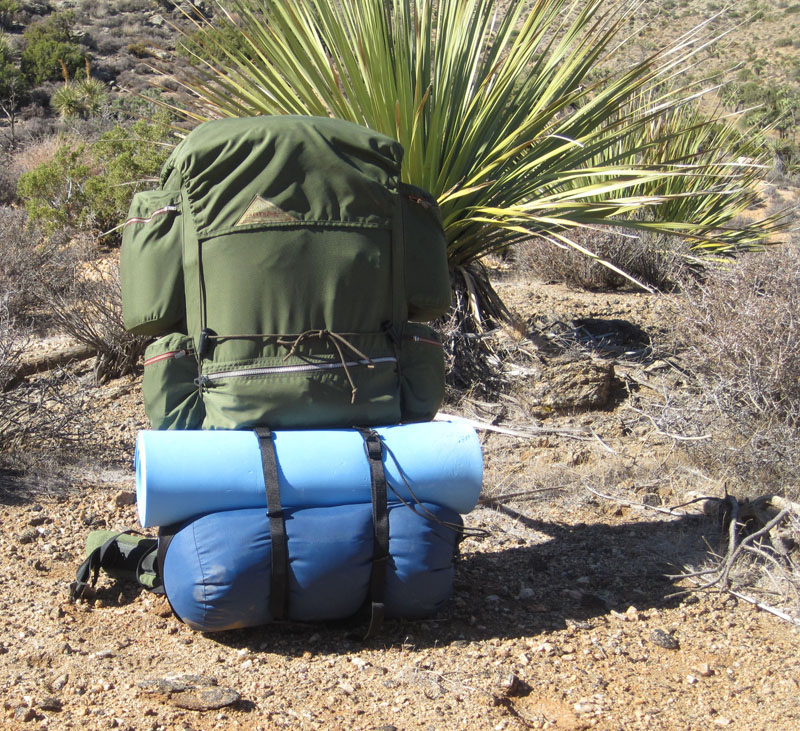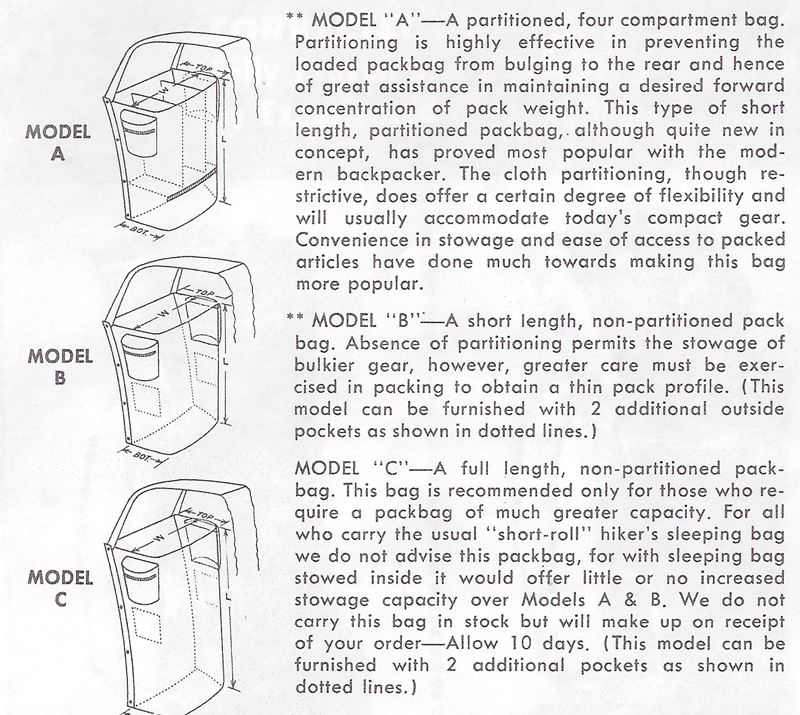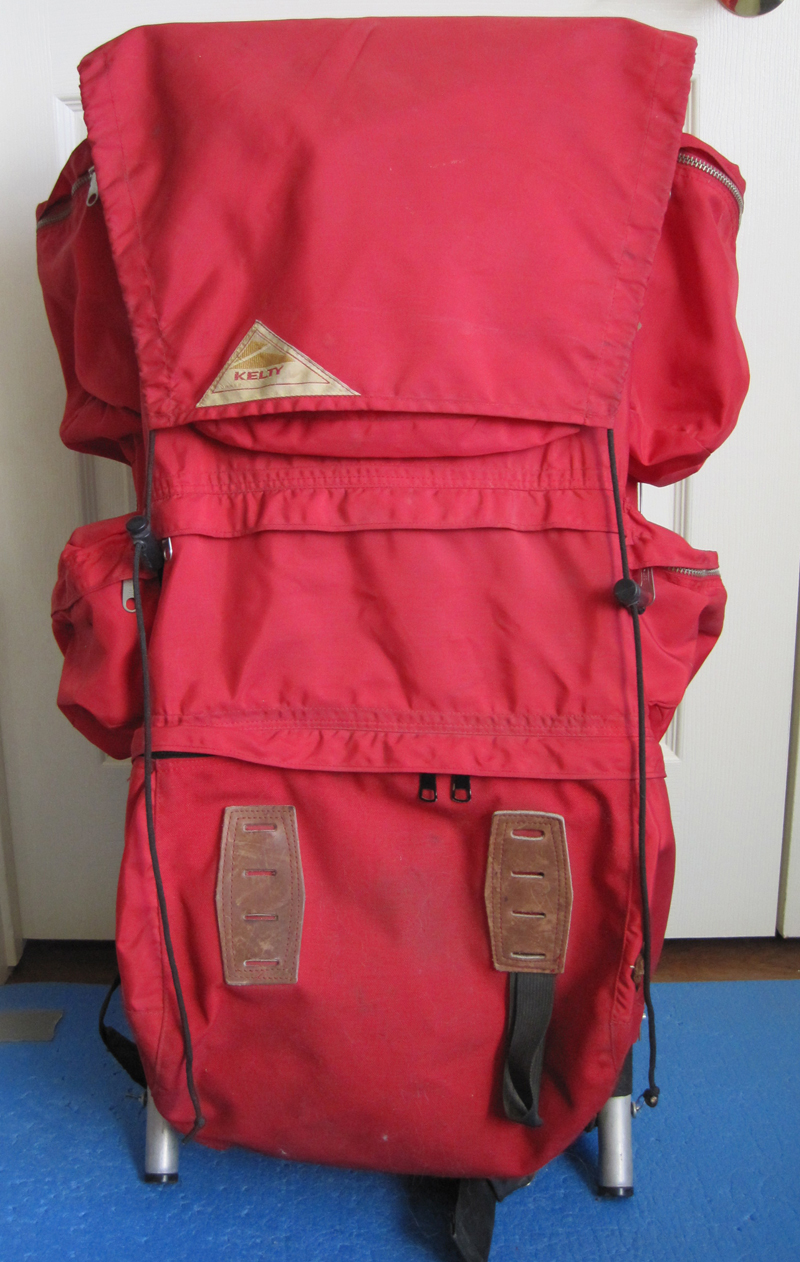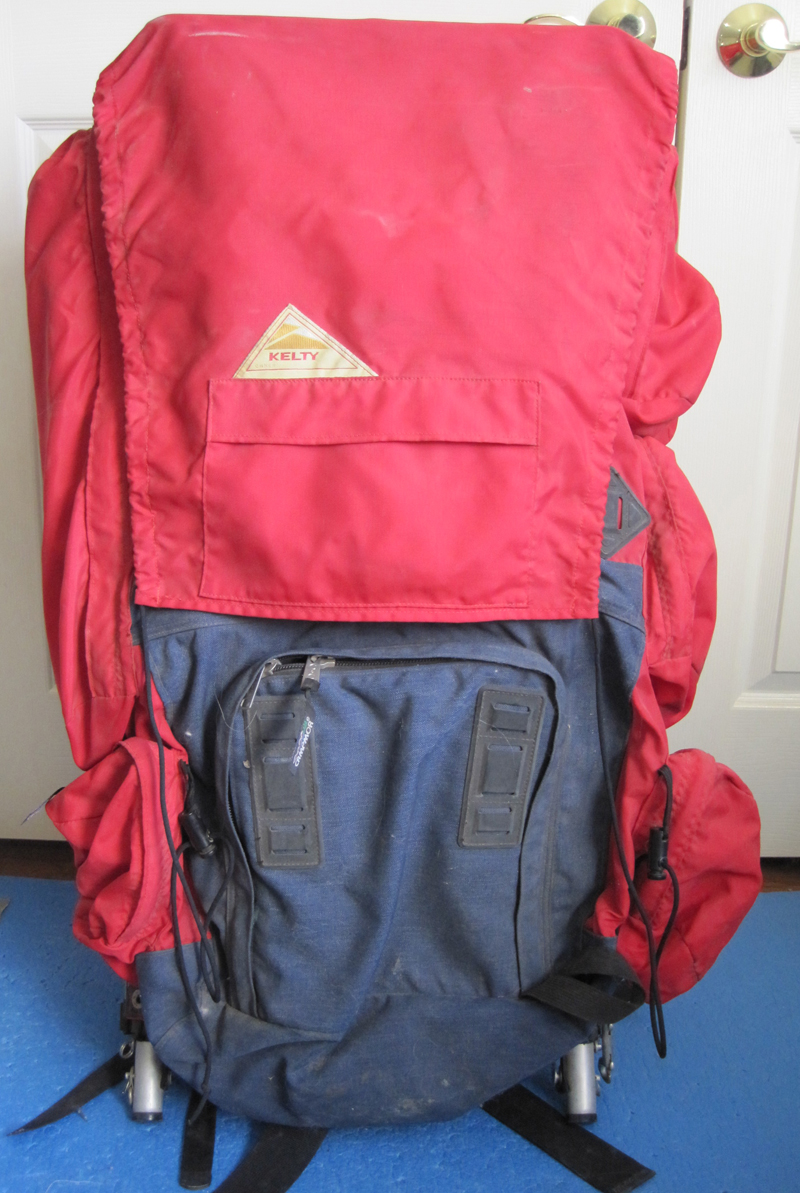Topic
Backpacks: What's the deal with sleeping bag compartments?
Forum Posting
A Membership is required to post in the forums. Login or become a member to post in the member forums!
Home › Forums › Gear Forums › Gear (General) › Backpacks: What's the deal with sleeping bag compartments?
- This topic has 12 replies, 12 voices, and was last updated 7 years, 11 months ago by
 bradmacmt.
bradmacmt.
-
AuthorPosts
-
Feb 17, 2017 at 11:07 am #3451042
I know that manufactures who put separate sleeping bag compartments at the bottom of their packs aren’t typically targeting the UL crowd, but I’ve still got to ask, what’s the deal with these things? Why do they exist and what advantage do they provide?
I’m looking at getting another pack for when I have to carry a heavier load when I play the pack mule role on trips with my wife and son. Here, absolute weight is less important, and comfort more important, since I’m going to be hauling 30-40 pounds much of the time. And, because I like to try things on for a fit, I’m looking at brands that REI stocks, for better or for worse.
And in doing so, I keep seeing packs with sleeping bag compartments, which is something I just don’t get. It’s hard to imagine a situation where I’d need to remove my sleeping bag without also wanting to get at my other gear. The most common situation to need a sleeping bag is, of course, when setting up camp. That’s also when nearly all the other gear comes out.
I suppose I could see an emergency situation where I am hiking and need to stop, bundle up, and stay warm in my sleeping bag, but even then, in such a situation, I’m probably also breaking out the tarp or tent, not necessarily to pitch, but to shield me from wind or rain.
And a sleeping bag compartment isn’t going to keep your bag dry or protected from water, be it rain or a leaking hydration bladder. For that, you’re better of with a dry bag or a pack liner, and if the sleeping bag is in its own compartment, the pack liner won’t help.
So are sleeping bag compartments just a marketing gimmick, something people think they need or want, or do they provide some real benefit, even if that benefit is for the non-UL crowd?
What am I missing here?
Feb 17, 2017 at 11:29 am #3451048Gimmic. As a newbie backpacker I liked the idea since the bag goes at the bottom and thus hard to access, but as you say, when you setup camp you need all your stuff.
Full unzip would be much more useful if you’re going to add a zipper to access the main pack contents.
Feb 17, 2017 at 11:30 am #3451051No significant benefit I can see.
Feb 17, 2017 at 11:34 am #3451052Compression. You will usually see compression straps above that compartment. Crush the crap out of everything but your down or synthetic bag. Easy access on belay too.
Feb 17, 2017 at 12:40 pm #3451073So let’s go back into history. In the 60’s the most popular packs were Kelty externals, with 3/4 bags, and most people strapped their sleeping bags, housed in a stuff sack, to the bottom of the frame. Keep in mind that we didn’t have 800-900 fill down, but more like 500. So the stuff sack and the straps helped to compress the bag. Like this:

Kelty did make a full bag that covered the entire frame, the Model C, but it wasn’t popular and Kelty didn’t even stock it — it was special order. See this blurb from a mid 60’s catalogue:

In 1968 Colin Fletch published the Complete Walker and extolled the virtue of his full sized Trail Wise pack, which did not have a sleeping bag compartment. With the release of the New Complete Walker in 1973, these Trail Wise packs started to impact Kelty’s market share, so they came out with a new full-sized pack, the Serac. But they included a sleeping bag compartment, not a large big pack bag like the Model C. See the Serac below:

What I didn’t like about this pack is there is just a horizontal zipper for access to the bottom compartment and it was difficult to stuff a sleeping bag into it.
The in the 80’s Kelty came out with an even larger pack, the Serac Expedition that was over 7,000 cu in or 115 L. This was my pack for longish desert trips for 25 years, where I had to carry a lot of water. Note that the bottom compartment has a U-shaped zipper, which made it easy to stuff the sleeping bag. It also that the ability to convert it into a huge bag — the fabric separating the top compartment from the sleeping bag compartment could be zipped opened.

I usually kept the top compartment separated from the bottom, it was just easier to keep my sleeping stuff at the bottom, separate from everything else. Keep in mind that on most trips I used my D4 3/4 bag and was used to carrying the sleeping bag below the pack bag.
Also notice that on all of these packs there are side pockets. People seem to like compartments to separate their gear.
Here is a link to more of my old Kelty packs.
My first internal frame pack was a Mountainsmith Frostfire II that had a sleeping bag compartment too. Somewhere in my garage is a Gregory Whitney 95, with the same compartment. The Gregory can be opened up to make on huge bag, and I can’t remember if the Mountainsmith could. I really didn’t like either bag, and only used them on winter snow trips when I needed to travel on snowshoes. I also have an older Deuter with a zip-out that converts the sleeping bag compartment into one large bag… so I suspect that the pack makers do this because their marketing research says this is what the majority of customers want, or they just keep doing the same thing over and over.
Today my go-to packs are a couple of McHale internals, which are just a big bag. Of course my sleeping bags or quilts compress into tiny packages, unlike my old sleeping bag that I used for over 30 years.
Feb 17, 2017 at 1:12 pm #3451079For me it’s organisation. The Zpacks arc zip opens right up and can be packed in a very tidy organised way, with the pack horizontal. For heavier weight trips, my osprey Atmos AG sleep bag compartment means I can pack sleeping quilt, xlite and thermarest compressible pillow into a big dry sack and put this into the zippered compartment. Then all the other stuff can go in the top part of the pack. Why do I like this? I like to get to camp and pull out the sleeping gear and air it out whilst setting up shelter etc. Could I do without it? Yes, but I just like it as a feature…
Feb 17, 2017 at 3:03 pm #3451101Maybe historical.
When your SB is strapped on the outside, like on an old kelty, it can get damaged in scrub, wet in the rain, or even lost. Yes, I have found SBs on the track! So adding an SB compartment at the bottom made some sort of sense, for a while.
One of my packs had a low compartment. Far too big for just an SB though, so a LOT of other gear went in there. Was having a seperate compartment of any use? Nope. The packs I make today for myself do not have one.Cheers
Feb 17, 2017 at 5:21 pm #3451130+1 to what Nick said.
Sleeping bag compartments are an historical accident, not a useful feature, unless you have “more compartments/pockets are better” syndrome.
— Rex (Former owner of full-sized Trailwise pack)
Feb 17, 2017 at 7:13 pm #3451155The historical source of the sleeping bag compartment listed above is absolutely right. The only benefit if a compartment like this would be the internal compression that the divider panel supplies. An internal divider can keep the pack from “barreling” out from a generally rectangular cross section to a round shape. Look at old Jensen soft packs. They had a horizonal divider and a vertical divider. Those internal compression panels maintained the shape of the pack. They also made it difficult to access your stuff.
Feb 18, 2017 at 12:10 pm #3451261Here’s what I was told the benefit was when I bought my Lowe Alpine internal frame pack back in the70’s:
“Your sleeping bag absorbs perspiration and moisture from the dewey night air while you sleep, so you should air it out in direct sun at long rest stops and lunch breaks. Having a seperate sleeping bag compartment makes this much easier, since you don’t have to repackage the stuff in the top compartment.”
I wasn’t rich enough to have a down bag, but did notice my synthetic bag got a little clammy feeling and less warm after a night or two. So the reasoning behind the seperate compartment seemed to make sense.
However, in practice – I found that my synthetic bag was so bulky that I had to unpack part of the upper compartment to make enough room in the lower compartment to get my sleeping bag out without having to pull so hard I worried about ripping threads holding it together – or to put it back in, since it needed to be compressed quite a bit to fit back into the space.
Perhaps a down bag or compression stuff sack would have made the seperate sleeping bag compartment work as advertised. It could also be that I was backpacking in the northern parts of the US and had a sleeping bag that was warmer than the typical 3 season bag.
Strapping the sleeping bag to the bottom of my Kelty external frame pack was much easier than using the sleeping bag compartment of the internal frame pack IMO.
However – if I was buying gear for winter backpacking today, I would use a down bag — and want an internal frame pack with a seperate sleeping bag compartment to make it easy to air out at rest stops.
For 3 season use, I’d prefer not to have an extra zipper to fail :)
Feb 18, 2017 at 1:22 pm #3451272“Your sleeping bag absorbs perspiration and moisture from the dewey night air while you sleep, so you should air it out in direct sun at long rest stops and lunch breaks.
Trouble is, I don’t think this is really true. Our down gear may absorb some moisture from our bodies, depending on the weather, but with a heat gradient from inside to outside they don’t get to absorb moisture INwards. Well, not that I have ever noticed.
And I don’t think we have ever aired our down gear out in the day time, and that has not been a problem either.Dewey night air – we handle that by using a good tent rather than a tarp. We keep the inside of the tent a couple of degrees warmer than the outside by body heat. That works for us.
Cheers
Feb 18, 2017 at 2:56 pm #3451289I like this question. I too have wondered about this for a long time. And I sell packs part time at an REI. Hardly anyone asks me why there is a separate sleeping bag compartment. A lot of people respond with enthusiasm when I show them the compartment and explain it is for a sleeping bag. They say they love that separate compartment. I don’t ask them why they think that. I do explain that it is for their sleeping bag, so that this critical piece of equipment (see post above re: lost) is well protected and they don’t end up with anything hard and heavy against their lower spine. (I take teenage beginners backpacking and have seen just about everything packed into that compartment, including stoves, pots, nalgenes, and cans of bug repellent.) But protecting the sleeping bag in the bottom of the pack does not require a zipper or a partition. Based on the customer responses, I agree that it must be marketing, which doesn’t stand up well to thinking things through in this way. My husband and I have single-compartment top-loading packs; if our down bags have absorbed humidity we do air them out at the next sunny opportunity but since we don’t carry a ton of gear we really don’t care if we have to unpack it and repack it. But most of my customers get all enthralled with “features.” I just encourage them to try on as many models as they are willing, starting with the lightest and simplest. But they still like the separate compartment. The pack makers must know that.
Feb 19, 2017 at 8:22 am #3451378
Here’s an old shot from 1977 of me getting ready for a Winter climbing trip. I never liked the Kelty Style packs with bag below so gravitated to the Jansport “D” packs (D3 shown). In 1978 I switched to Internal Frame Packs, and never owned another external. I’ve had MANY internals with separate sleeping bag compartments, but have never used them. I always load from the top, and really can see no need for them, except, as stated above, in a belay situation.
-
AuthorPosts
- You must be logged in to reply to this topic.
Forum Posting
A Membership is required to post in the forums. Login or become a member to post in the member forums!
Our Community Posts are Moderated
Backpacking Light community posts are moderated and here to foster helpful and positive discussions about lightweight backpacking. Please be mindful of our values and boundaries and review our Community Guidelines prior to posting.
Get the Newsletter
Gear Research & Discovery Tools
- Browse our curated Gear Shop
- See the latest Gear Deals and Sales
- Our Recommendations
- Search for Gear on Sale with the Gear Finder
- Used Gear Swap
- Member Gear Reviews and BPL Gear Review Articles
- Browse by Gear Type or Brand.








